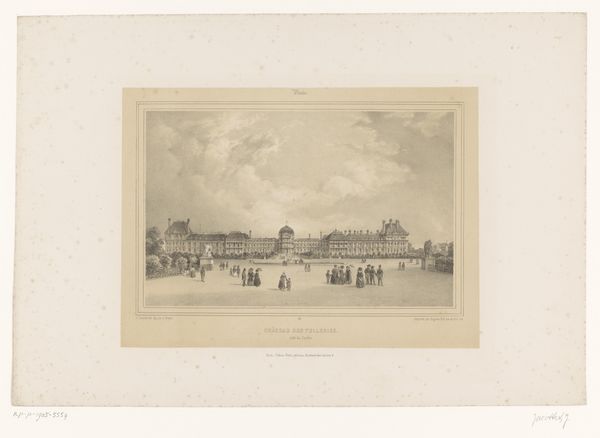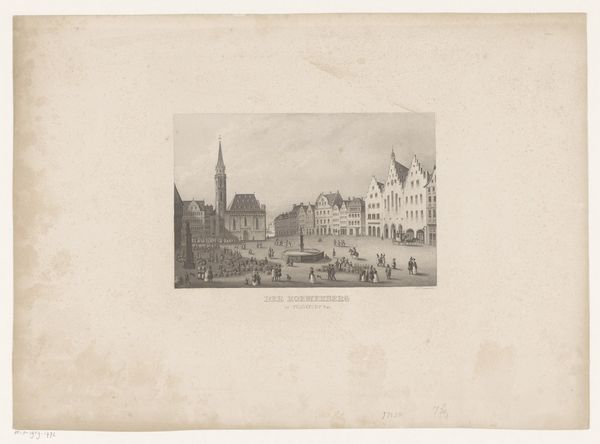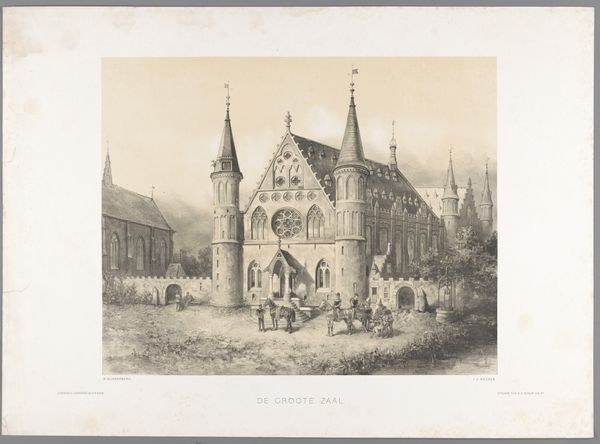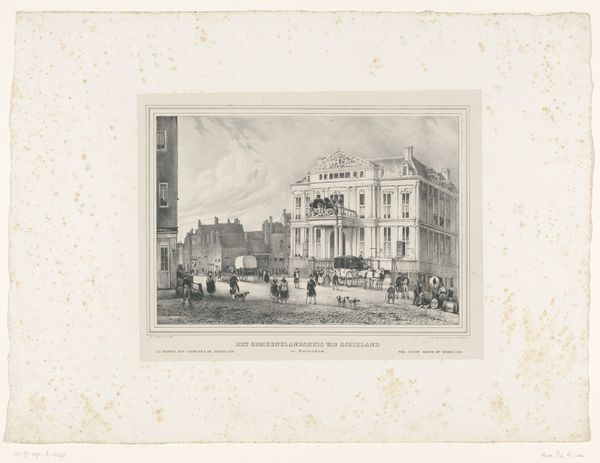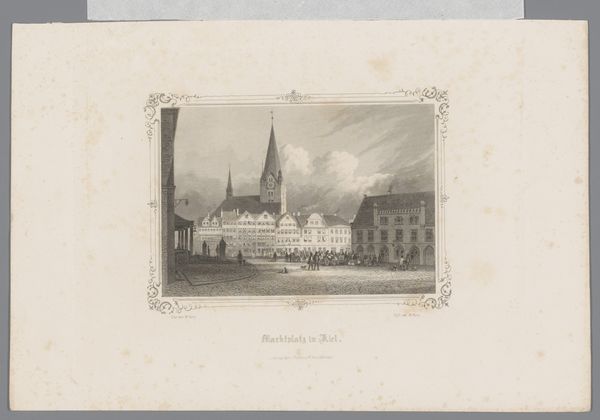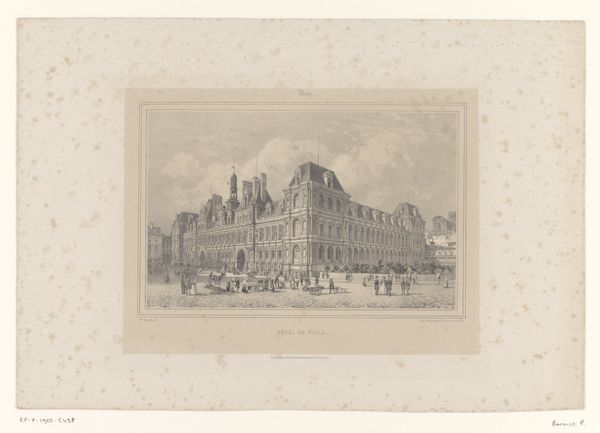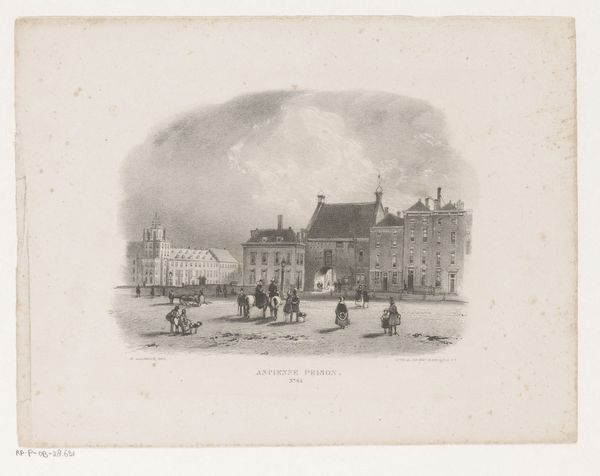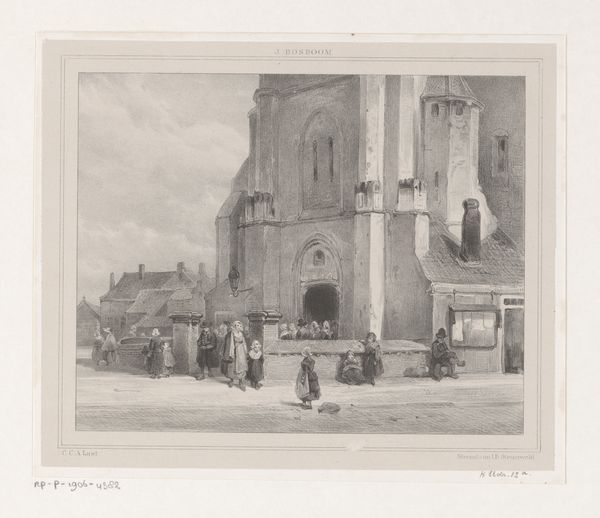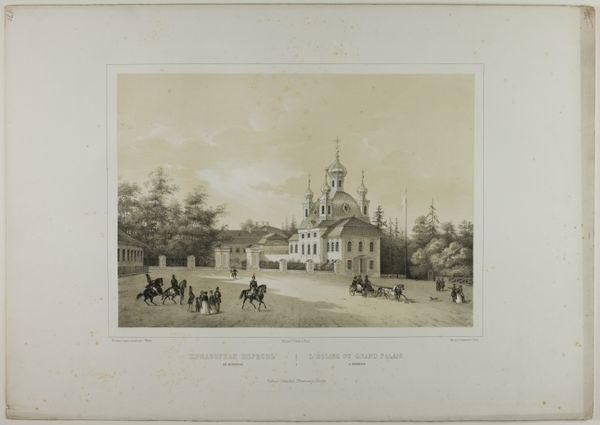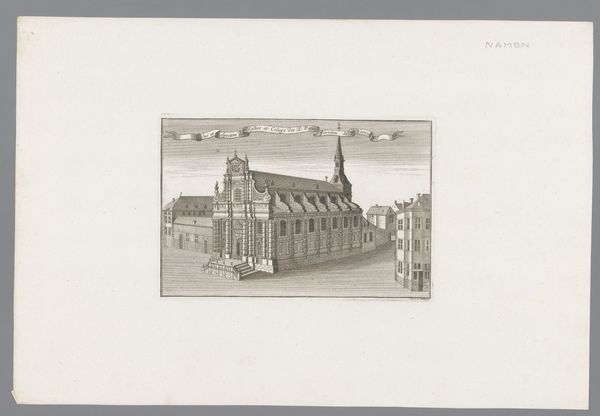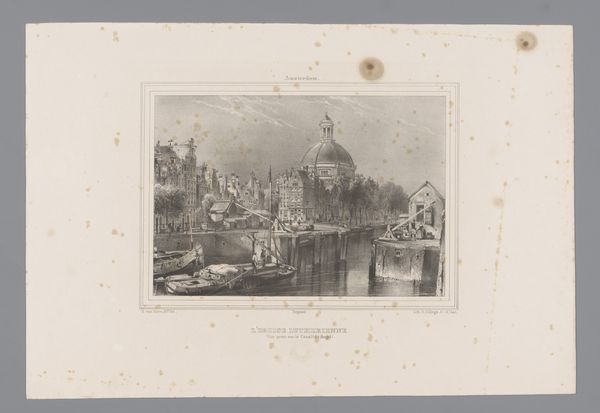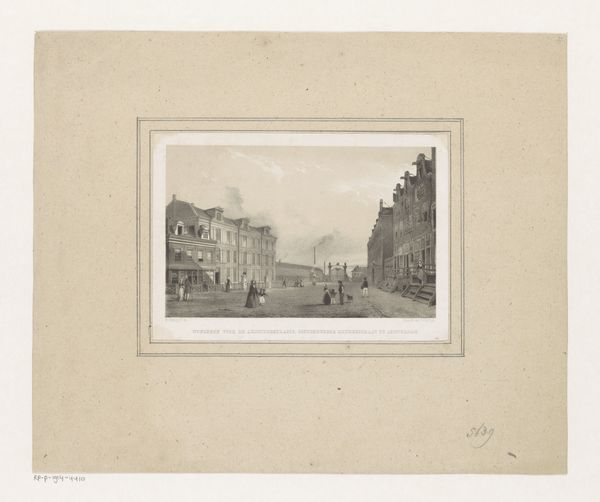
print, engraving
# print
#
cityscape
#
engraving
#
realism
Dimensions: height 305 mm, width 450 mm
Copyright: Rijks Museum: Open Domain
Editor: This engraving, "Loterijzaal op het binnenhof in Den Haag" from 1858, by Johannes Hilverdink, it seems to capture a very still, almost bureaucratic moment in time within this public square. What sort of context am I missing here? Curator: The stillness you observe is telling. Consider the mid-19th century as a period grappling with immense social shifts, as increased access to governance by the merchant classes eroded previous systems of governance. This image of the Lottery Hall could be seen not just as a cityscape but as a document of power dynamics at play. Who benefits from lotteries? Editor: I guess you could say they are a regressive tax in effect, preying on the hopes of the poor? Curator: Precisely. Think about who is depicted in the square versus who might be inside the Lottery Hall. Do we see a representation of the ruling class or the working class? What might that say about access to wealth and opportunity at this time? Editor: So the apparent realism is, in effect, a skewed mirror? It suggests, rather than simply depicts, social realities? Curator: Yes, and even the choice of engraving as a medium, accessible and reproducible, hints at the broader dissemination of such power structures. The image participates in a dialogue about visibility, transparency, and ultimately, the distribution of wealth within the state. How does this impact your perception of the work? Editor: I’ll never see a simple cityscape again; there's a potent conversation here about who has access to what, and how art reflects, but also shapes those dialogues. Thanks, that really flipped my viewing of the engraving.
Comments
No comments
Be the first to comment and join the conversation on the ultimate creative platform.

